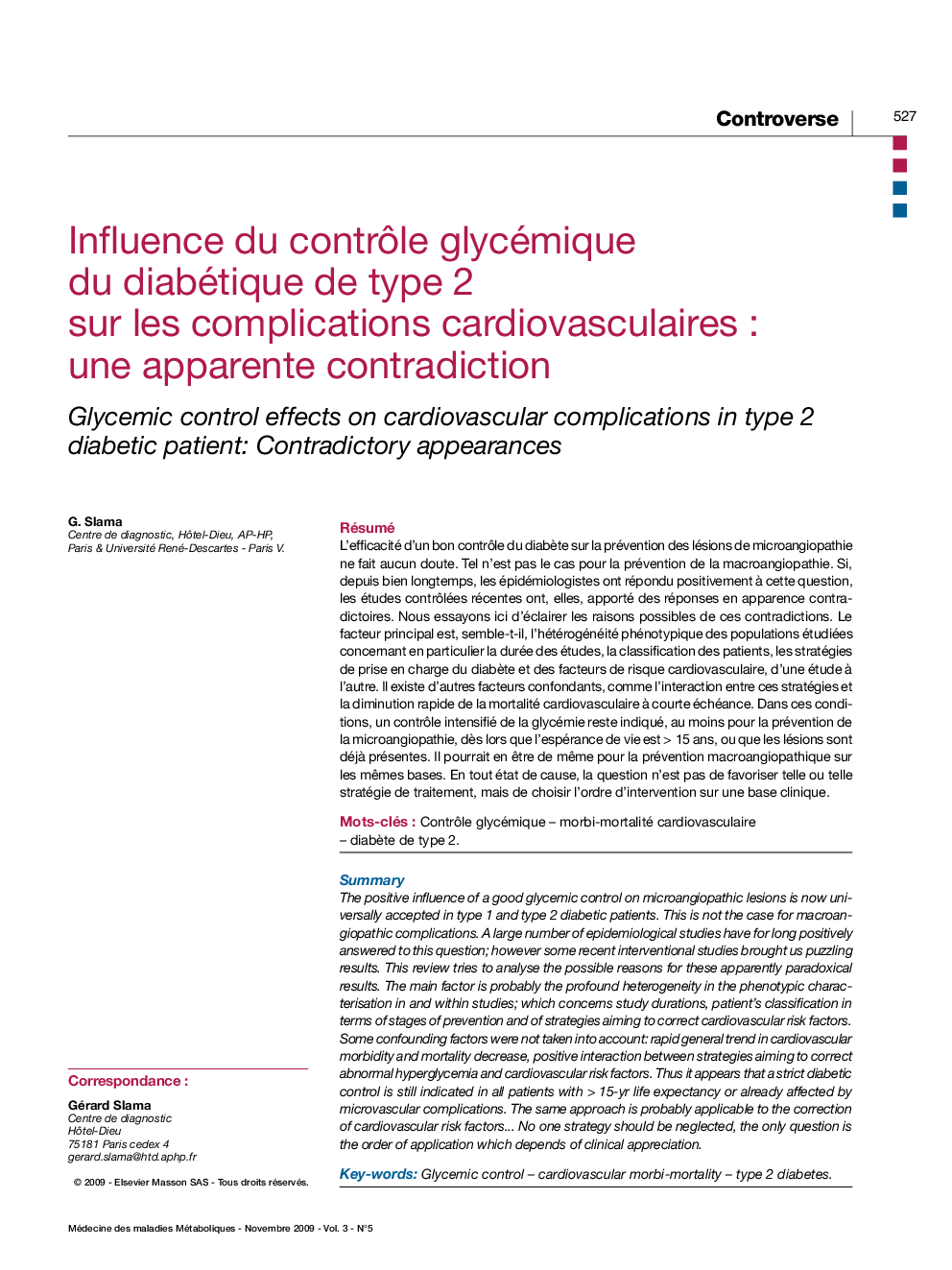| Article ID | Journal | Published Year | Pages | File Type |
|---|---|---|---|---|
| 3275177 | Médecine des Maladies Métaboliques | 2009 | 7 Pages |
Abstract
The positive influence of a good glycemic control on microangiopathic lesions is now universally accepted in type 1 and type 2 diabetic patients. This is not the case for macroangiopathic complications. A large number of epidemiological studies have for long positively answered to this question; however some recent interventional studies brought us puzzling results. This review tries to analyse the possible reasons for these apparently paradoxical results. The main factor is probably the profound heterogeneity in the phenotypic characterisation in and within studies; which concerns study durations, patient's classification in terms of stages of prevention and of strategies aiming to correct cardiovascular risk factors. Some confounding factors were not taken into account: rapid general trend in cardiovascular morbidity and mortality decrease, positive interaction between strategies aiming to correct abnormal hyperglycemia and cardiovascular risk factors. Thus it appears that a strict diabetic control is still indicated in all patients with > 15-yr life expectancy or already affected by microvascular complications. The same approach is probably applicable to the correction of cardiovascular risk factors⦠No one strategy should be neglected, the only question is the order of application which depends of clinical appreciation.
Related Topics
Health Sciences
Medicine and Dentistry
Endocrinology, Diabetes and Metabolism
Authors
G. Slama,
